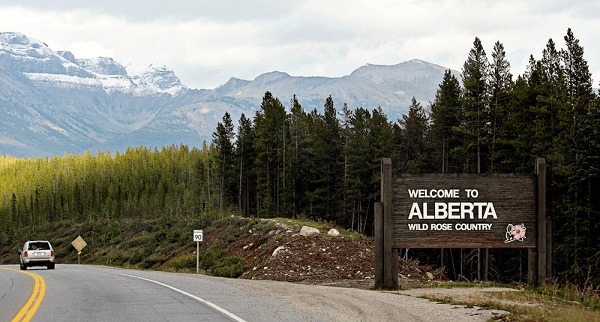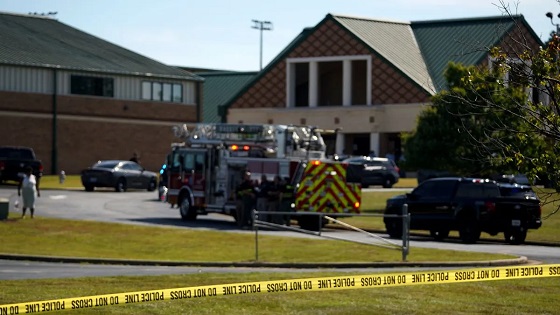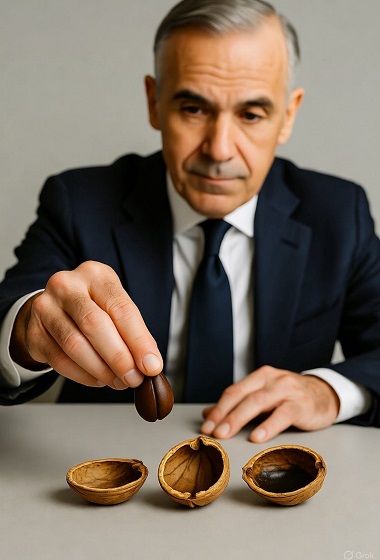Uncategorized
Russian baby rescued after nearly 36 hours in frozen rubble

MOSCOW —
It was the sound of life.
On Tuesday, to everyone’s delight and surprise, they pulled a baby boy out of the rubble alive, nearly 36 hours after the disaster that blew apart his home. His father called it “a New Year’s miracle.”
The building collapse in the Russian city of Magnitogorsk before dawn Monday has killed at least nine people so far, and officials say 32 people who lived in the building have still not been accounted for.
The collapse followed an explosion that was believed to have been caused by a gas leak.
The boy, an 11-month-old named Ivan Fokin, was in extremely serious condition, officials said, with fractures, a head injury and suffering from hypothermia and frostbite after his ordeal in temperatures around minus 20 degrees Celsius (minus 4 degrees Fahrenheit).
He was flown to Moscow late Tuesday in a desperate attempt to save his life. He was in stable condition on arrival in the capital, the head of the national public health institute Vladimir Uiba was quoted as telling state news agency Tass.
Although Ivan’s prospects for survival appeared dire, “it’s a New Year’s miracle,” his father Yevgeny was quoted as saying by the RT satellite TV channel.
The father was at work when his wife phoned to say the building had collapsed. She escaped the rubble with a 3-year-old son, Russian news reports said.
“I was sleeping on the couch with my older son, hugging him and the young one was sleeping in his baby bed,” mother Olga Fokina said on Russian TV. “I and the older one fell down and quickly got out and I didn’t know what happened to the baby bed afterward.”
Rescue worker Pyotr Gritsenko said on Russian television that baby’s discovery came after one of the crew heard faint cries.
“They stopped all the equipment. He began to cry louder,” but the crew couldn’t find him, he said. A search dog was brought in and confirmed that someone was under the rubble, focusing the rescue effort.
The father said he helped rescuers dig in the rubble and “showed them a place where he approximately could be.”
Regional governor Boris Dubrovsky was quoted as saying by the Interfax news agency that the child apparently had been protected by being in a crib and being wrapped warmly.
The rescue operation, aided by powerful heaters and lights, was continuing overnight into Wednesday in the city about 1,400
Russian President Vladimir Putin visited the accident site on Monday and went to a local hospital, where he spoke to a 13-year old-boy who had head injuries and frostbite after spending an hour under the rubble.
“You will get well soon, you are a fighter,” Putin told the boy, one of five people hospitalized from the building collapse.
Russian officials say the odds of finding anyone else alive in the debris look increasingly slim, given the extreme weather.
Late Tuesday, three people died in Magnitogorsk about two
In other Russian holiday disasters, seven people including a couple and their three children died in a house fire in the town of Orsk, 1,500
In Moscow, the mayor fired the director of the city’s renowned Gorky Park after 13 people were injured when a wooden pedestrian bridge packed with New Year’s celebrants collapsed.
Video on Russian television showed a section of the bridge collapsing early Tuesday as the national anthem played on loudspeakers, marking the beginning of 2019. The park in central Moscow is a popular gathering place for the holiday.
The bridge, 350
Jim Heintz, The Associated Press
Uncategorized
CNN’s Shock Climate Polling Data Reinforces Trump’s Energy Agenda


From the Daily Caller News Foundation
As the Trump administration and Republican-controlled Congress move aggressively to roll back the climate alarm-driven energy policies of the Biden presidency, proponents of climate change theory have ramped up their scare tactics in hopes of shifting public opinion in their favor.
But CNN’s energetic polling analyst, the irrepressible Harry Enten, says those tactics aren’t working. Indeed, Enten points out the climate alarm messaging which has permeated every nook and cranny of American society for at least 25 years now has failed to move the public opinion needle even a smidgen since 2000.
Appearing on the cable channel’s “CNN News Central” program with host John Berman Thursday, Enten cited polling data showing that just 40% of U.S. citizens are “afraid” of climate change. That is the same percentage who gave a similar answer in 2000.
Dear Readers:
As a nonprofit, we are dependent on the generosity of our readers.
Please consider making a small donation of any amount here.
Thank you!
Enten’s own report is an example of this fealty. Saying the findings “kind of boggles the mind,” Enten emphasized the fact that, despite all the media hysteria that takes place in the wake of any weather disaster or wildfire, an even lower percentage of Americans are concerned such events might impact them personally.
“In 2006, it was 38%,” Enten says of the percentage who are even “sometimes worried” about being hit by a natural disaster, and adds, “Look at where we are now in 2025. It’s 32%, 38% to 32%. The number’s actually gone down.”
In terms of all adults who worry that a major disaster might hit their own hometown, Enten notes that just 17% admit to such a concern. Even among Democrats, whose party has been the major proponent of climate alarm theory in the U.S., the percentage is a paltry 27%.
While Enten and Berman both appear to be shocked by these findings, they really aren’t surprising. Enten himself notes that climate concerns have never been a driving issue in electoral politics in his conclusion, when Berman points out, “People might think it’s an issue, but clearly not a driving issue when people go to the polls.”
“That’s exactly right,” Enten says, adding, “They may worry about in the abstract, but when it comes to their own lives, they don’t worry.”
This reality of public opinion is a major reason why President Donald Trump and his key cabinet officials have felt free to mount their aggressive push to end any remaining notion that a government-subsidized ‘energy transition’ from oil, gas, and coal to renewables and electric vehicles is happening in the U.S. It is also a big reason why congressional Republicans included language in the One Big Beautiful Bill Act to phase out subsidies for those alternative energy technologies.
It is key to understand that the administration’s reprioritization of energy and climate policies goes well beyond just rolling back the Biden policies. EPA Administrator Lee Zeldin is working on plans to revoke the 2010 endangerment finding related to greenhouse gases which served as the foundation for most of the Obama climate agenda as well.
If that plan can survive the inevitable court challenges, then Trump’s ambitions will only accelerate. Last year’s elimination of the Chevron Deference by the Supreme Court increases the chances of that happening. Ultimately, by the end of 2028, it will be almost as if the Obama and Biden presidencies never happened.
The reality here is that, with such a low percentage of voters expressing concerns about any of this, Trump and congressional Republicans will pay little or no political price for moving in this direction. Thus, unless the polls change radically, the policy direction will remain the same.
David Blackmon is an energy writer and consultant based in Texas. He spent 40 years in the oil and gas business, where he specialized in public policy and communications.
Uncategorized
Kananaskis G7 meeting the right setting for U.S. and Canada to reassert energy ties


Energy security, resilience and affordability have long been protected by a continentally integrated energy sector.
The G7 summit in Kananaskis, Alberta, offers a key platform to reassert how North American energy cooperation has made the U.S. and Canada stronger, according to a joint statement from The Heritage Foundation, the foremost American conservative think tank, and MEI, a pan-Canadian research and educational policy organization.
“Energy cooperation between Canada, Mexico and the United States is vital for the Western World’s energy security,” says Diana Furchtgott-Roth, director of the Center for Energy, Climate and Environment and the Herbert and Joyce Morgan Fellow at the Heritage Foundation, and one of America’s most prominent energy experts. “Both President Trump and Prime Minister Carney share energy as a key priority for their respective administrations.
She added, “The G7 should embrace energy abundance by cooperating and committing to a rapid expansion of energy infrastructure. Members should commit to streamlined permitting, including a one-stop shop permitting and environmental review process, to unleash the capital investment necessary to make energy abundance a reality.”
North America’s energy industry is continentally integrated, benefitting from a blend of U.S. light crude oil and Mexican and Canadian heavy crude oil that keeps the continent’s refineries running smoothly.
Each day, Canada exports 2.8 million barrels of oil to the United States.
These get refined into gasoline, diesel and other higher value-added products that furnish the U.S. market with reliable and affordable energy, as well as exported to other countries, including some 780,000 barrels per day of finished products that get exported to Canada and 1.08 million barrels per day to Mexico.
A similar situation occurs with natural gas, where Canada ships 8.7 billion cubic feet of natural gas per day to the United States through a continental network of pipelines.
This gets consumed by U.S. households, as well as transformed into liquefied natural gas products, of which the United States exports 11.5 billion cubic feet per day, mostly from ports in Louisiana, Texas and Maryland.
“The abundance and complementarity of Canada and the United States’ energy resources have made both nations more prosperous and more secure in their supply,” says Daniel Dufort, president and CEO of the MEI. “Both countries stand to reduce dependence on Chinese and Russian energy by expanding their pipeline networks – the United States to the East and Canada to the West – to supply their European and Asian allies in an increasingly turbulent world.”
Under this scenario, Europe would buy more high-value light oil from the U.S., whose domestic needs would be back-stopped by lower-priced heavy oil imports from Canada, whereas Asia would consume more LNG from Canada, diminishing China and Russia’s economic and strategic leverage over it.
* * *
The MEI is an independent public policy think tank with offices in Montreal, Ottawa, and Calgary. Through its publications, media appearances, and advisory services to policymakers, the MEI stimulates public policy debate and reforms based on sound economics and entrepreneurship.
As the nation’s largest, most broadly supported conservative research and educational institution, The Heritage Foundation has been leading the American conservative movement since our founding in 1973. The Heritage Foundation reaches more than 10 million members, advocates, and concerned Americans every day with information on critical issues facing America.
-
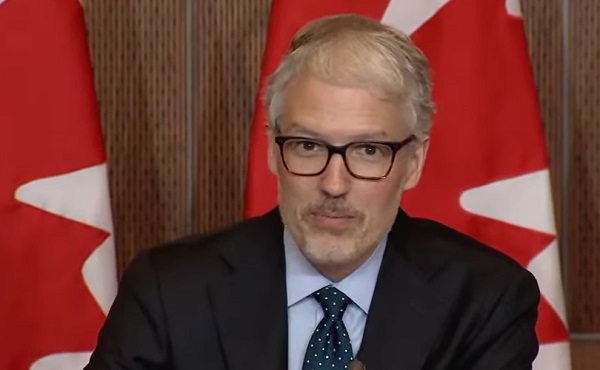
 Censorship Industrial Complex2 days ago
Censorship Industrial Complex2 days agoCanada’s privacy commissioner says he was not consulted on bill to ban dissidents from internet
-

 Business2 days ago
Business2 days agoFormer Trump Advisor Says US Must Stop UN ‘Net Zero’ Climate Tax On American Ships
-

 Alberta2 days ago
Alberta2 days agoEnbridge CEO says ‘there’s a good reason’ for Alberta to champion new oil pipeline
-

 National1 day ago
National1 day agoDemocracy Watch Renews Push for Independent Prosecutor in SNC-Lavalin Case
-

 Bruce Dowbiggin2 days ago
Bruce Dowbiggin2 days agoLong-Distance Field Goals Have Flipped The Field. Will The NFL Panic?
-
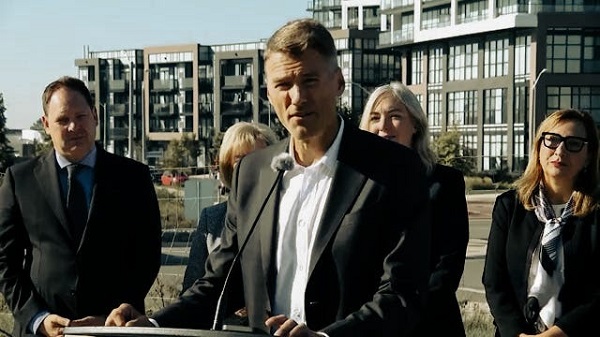
 Business2 days ago
Business2 days ago“Nation Building,” Liberal Style: We’re Fixing a Sewer, You’re Welcome, Canada
-

 Business1 day ago
Business1 day agoOver two thirds of Canadians say Ottawa should reduce size of federal bureaucracy
-

 Alberta6 hours ago
Alberta6 hours agoAlberta taxpayers should know how much their municipal governments spend

